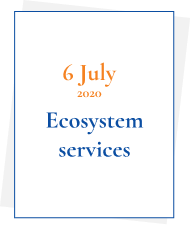
A Ponzi scheme is a fraudulent investment scheme where investors are paid returns based on capital contributed by new investors rather than on generated profit.
The former CEO of ACMEInvest was convicted of defrauding more than 3,000 investors out of $45 million as part of a Ponzi scheme.
The scheme is named for Charles Ponzi, who operated such a scheme in 1920 and cost his investors about $20 million. The largest Ponzi scheme, as well as the largest estimated financial fraud of any kind, ever discovered was run by Bernie Madoff through 2008, costing his victims an estimated $17 billion (with estimates running as high as $65 billion for what investors believed their accounts contained). Such schemes usually promise their investors extraordinarily large returns and rely on investor ignorance to sell shares in the scheme. The promised returns are often repaid at first, leading additional investors to participate, thus providing more capital to pay returns. If the returns appear high and stable enough, the scheme operator does not need to even pay out money but merely report to investors how much they are “making” to convince them not to withdraw their money.
Ponziho schéma je podvodná investiční operace, ve které jsou investorům vypláceny výnosy na základě kapitálu poskytnutého novými investory, a ne z vytvořeného zisku.
Bývalý generální ředitel ACMEInvest byl odsouzený za defraudaci 45 milionů dolarů od více než 3 000 investorů v rámci Ponziho schématu.
Toto schéma je pojmenováno podle Charlese Ponziho, který takovou operaci provozoval v roce 1920 a připravil své investory přibližně o 20 milionů dolarů. Největší Ponziho schéma, a také odhadem největší finanční podvod bez ohledu na typ, který byl kdy odhalen, provozoval Bernie Maddoff do roku 2008. Své oběti připravil o odhadovaných 17 miliard dolarů (odhady sahají až k 65 milionům dolarů pro částky, které investoři věřili, že jejich účty obsahují). Takovéto operace obvykle slibují svým investorům výjimečně vysoké výnosy a v prodeji podílů na tomto schématu spoléhají na neznalost investorů. Slibované výnosy se často nejprve vyplácejí, což vede k účasti dalších investorů, a to tak přináší další kapitál na výplatu výnosů. Pokud se výnosy zdají dostatečně vysoké a stabilní, provozovatel schématu ani nemusí vyplácet peníze, stačí vykazovat investorům, kolik „vydělávají“, aby je přesvědčil k tomu peníze nevybírat.
English Editorial Services’ mission is to assist international businesses and organizations of all sizes to communicate clearly, correctly, and persuasively with their business partners and target audiences.
Simply subscribe to receive our Business Term of the Day at no charge to your inbox each business day, with explanation in English and Czech.

English Editorial Services’ mission is to assist international businesses and organizations of all sizes to communicate clearly, correctly, and persuasively with their business partners and target audiences.
Simply subscribe to receive our Business Term of the Day at no charge to your inbox each business day, with explanation in English and Czech.

Receive a Business Term of the Day from English Editorial Services to your inbox each business day, with explanation in English and Czech.

Are you a European firm with interests in the U.S. or an American company with interests in Central Europe? We are in the Heart of Europe and the Heartland of America. We can assist with communications, transactional advisory, local representation, and new business operations.
